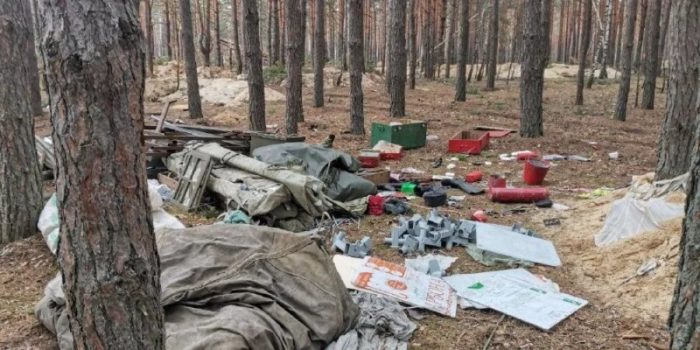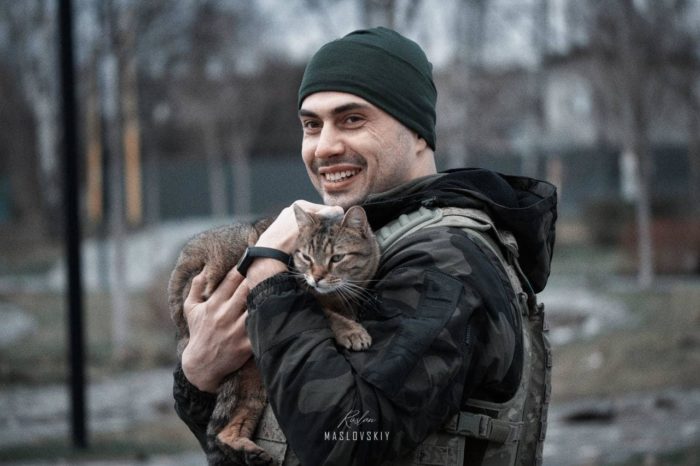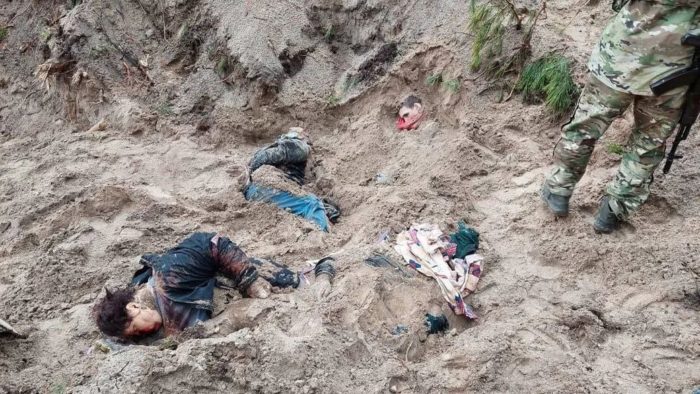As the Russian army pulled back from Kyiv Oblast and ended the month-long occupation of towns, they left behind a trail of death and devastation, a horrific landscape of waste and desolation, as well as a shocking toll of executed civilians. Civilians mowed down while trying to flee, locals surviving thanks to the village farm and cattle, looted and devastated homes: the sleepy village of Mykulychi, where Russians set up a base to attack the nearby towns of Hostomel, Irpin, and Bucha, recalls its month of Russian occupation.


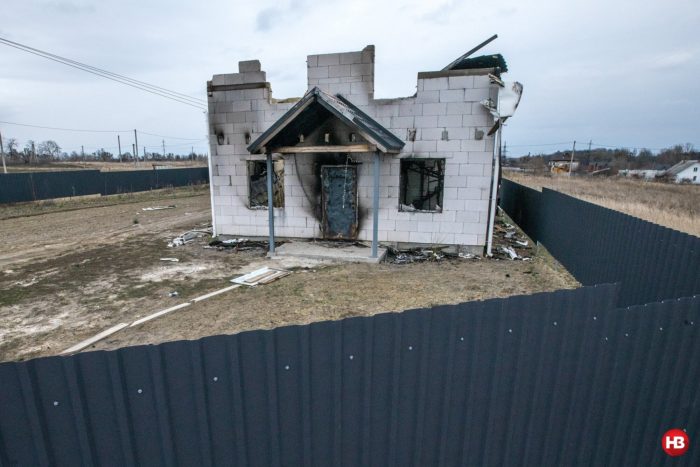
Evacuating the village
On March 11, the Russians disrupted the evacuation of residents from the raion (region) to Zhytomyr. Twelve buses were sent to Mykulychi to evacuate the local population. The Russian military stopped them at a checkpoint and ordered them to turn around and leave. Then, the Russians executed the villagers who had gathered and were trying to leave the settlement.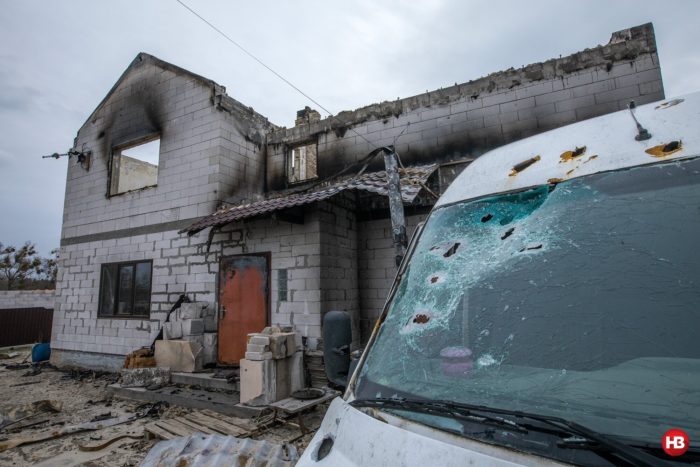
“There are several villages in our community; that’s over 16,000 people. We got about 2,000 out. You know, many inhabitants just couldn’t stand it anymore – both morally and physically, so they organized their own evacuation convoys. But, it didn’t work out. Some returned on their own; others were turned back by the Russians. The first vehicles were stopped and the people were shot on the spot. The head of the village of Kozintsi (about 1,400 inhabitants) decided to leave with his family. They shot his son. For no reason - just like that, right there and then. Let me tell you more… I was driving home a few days ago when I saw an old Zhiguli and four bodies lying beside it. And, you know what else the Russians do? They place booby traps on the bodies, so we can’t remove them until our demining experts arrive and neutralize them,” he says.
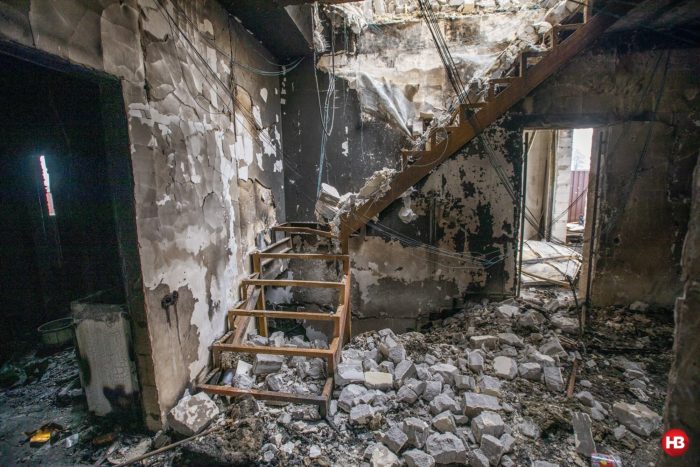
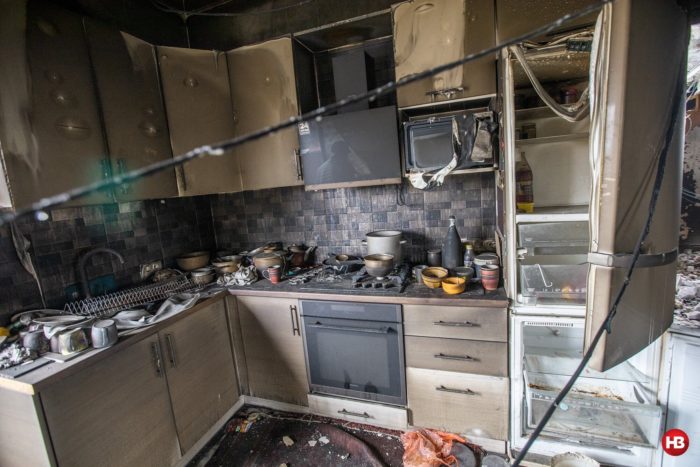
Russian army atrocities
Petro Perevoznyk continues to recount the atrocities committed by the retreating Russian forces. In the village of Klavdiyevo-Tarasove, a woman stepped out of her house in order to get a better phone signal. At that moment, a convoy of Russian vehicles was passing through the village. They opened fire and shot her for no reason at all.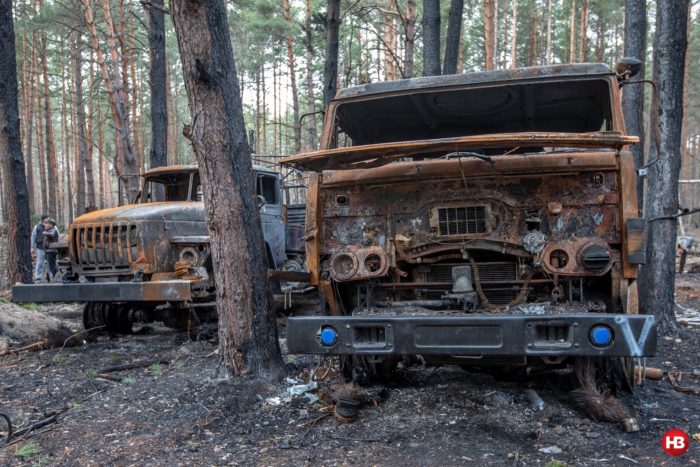
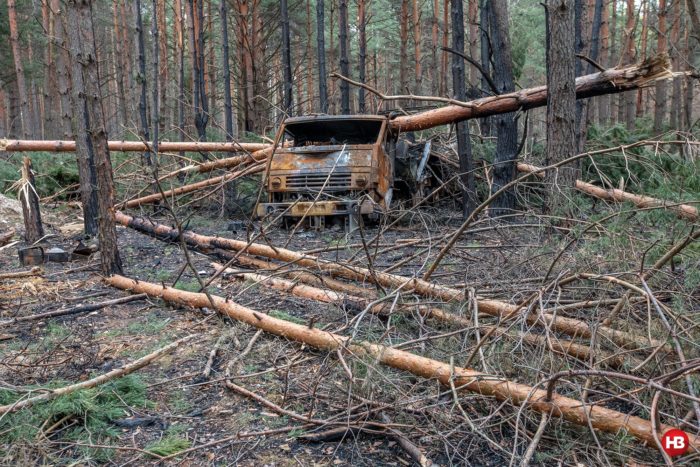
“They entered our village and just started shooting. Five of our people who were out on the street at that moment were murdered then. This is only in Mykulychi, never mind all the other towns and villages in our area. And, this is not the final count,” he explains bitterly.


“Yes, we’d prepared a lot of Molotov cocktails. I can’t tell you how many… I suppose we could have given them a “warm welcome”. But, I didn’t want to see a massacre in my town. I asked my people not to do stupid things. Their task was not to provoke the enemy, but to save themselves and their families,” he remarks.
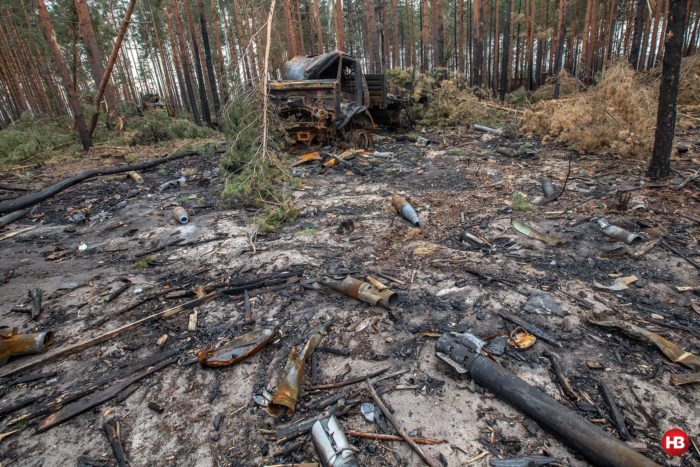
Saving the farm and the cattle from Russian occupation in village near Kyiv
The villagers say that they were able to survive thanks to the cows on a local farm, which belongs to the Agrotechnical College in Nemishayeve.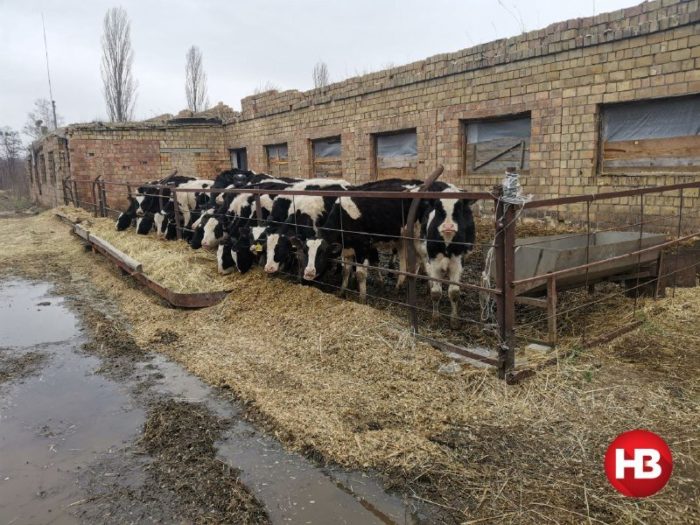
“We had to save the farm from Russian evil! The cattle were scattered all over the fields. We brought them in – the cows and the calves – and herded them into the pens. But, it was strange as the people who came to help us had never milked a cow in their lives. The Russians and their tanks were stationed in a field, near the farm. A group of them, armed with machine guns came to get milk almost every day. But, thank God, our people survived! Our community was able to pull through thanks to these cows and their milk. We looked after the cows and helped the people as much as we could.” says Leonid.

Like Napoleon’s 1812: why Russian troops retreated from northern Ukraine
Russian army camp is a landscape of waste and desolation
However, the Russian tanks did not remain in the open field for long. In early March, the invaders decided to move to a more protected place, in a forest on the outskirts of the village. Here they set up their camp and organized rudimentary living conditions.
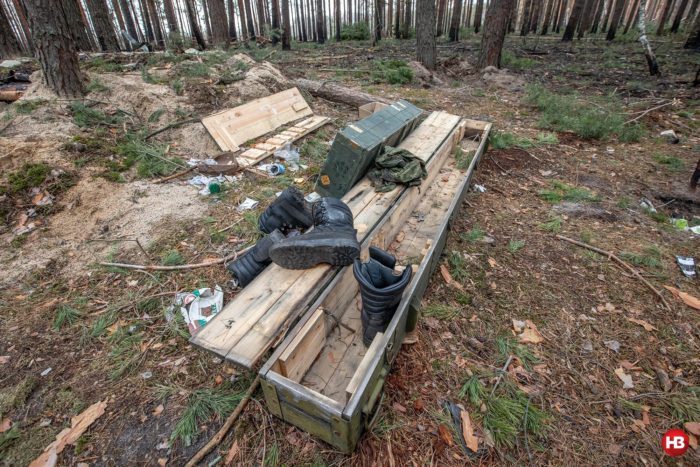
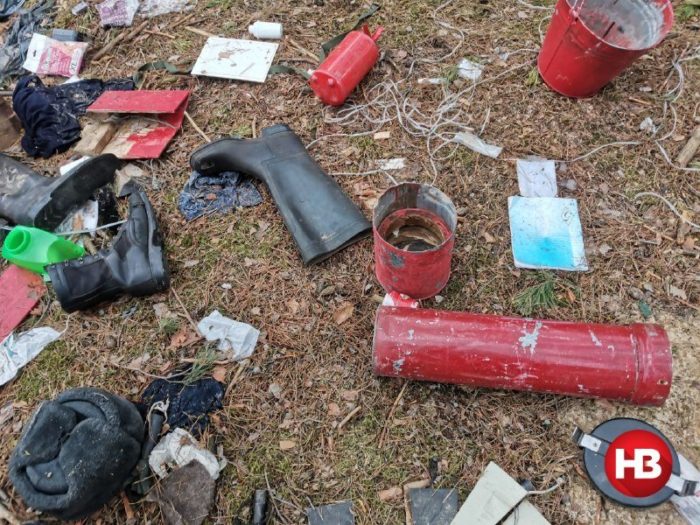

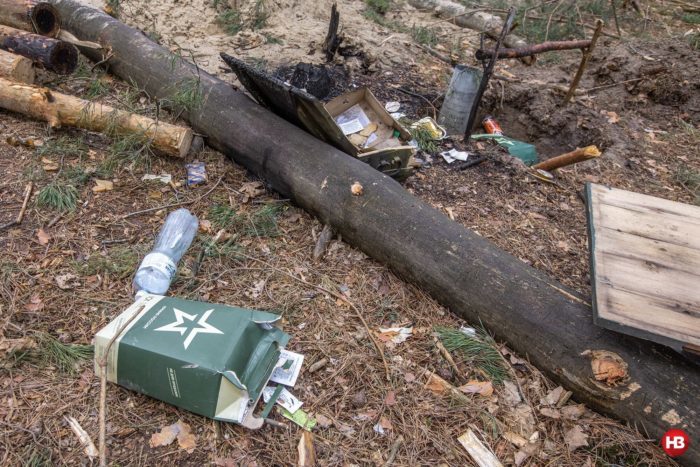
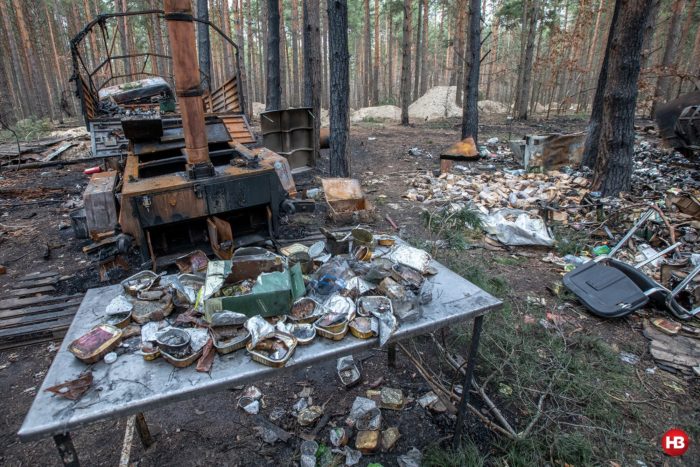
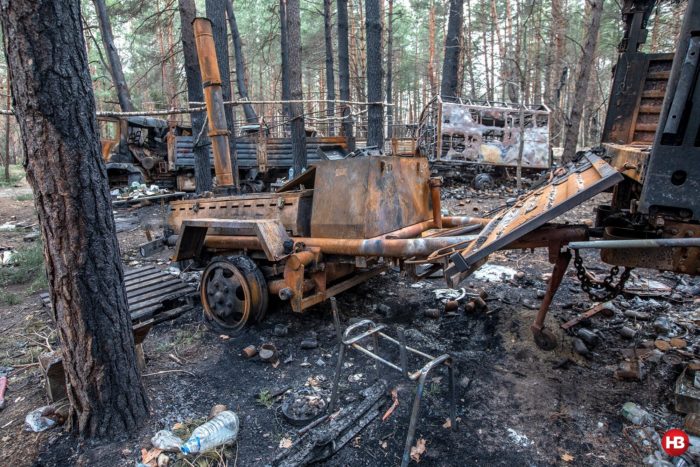
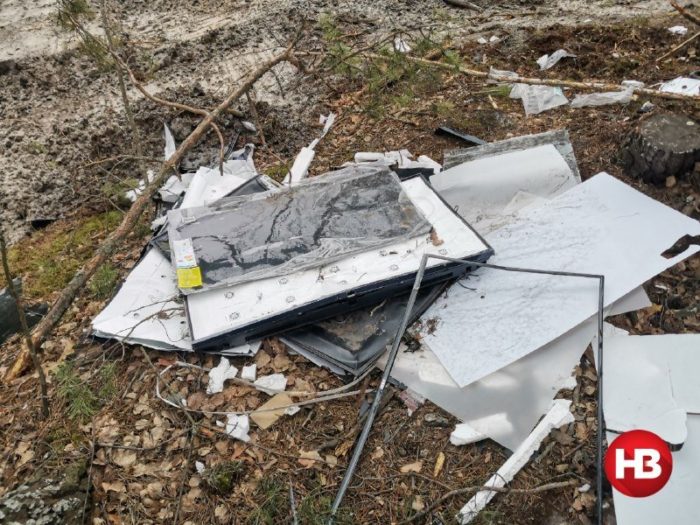
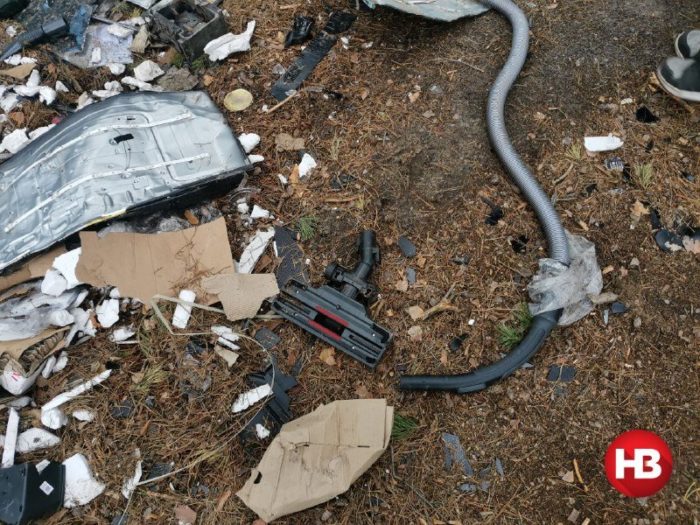
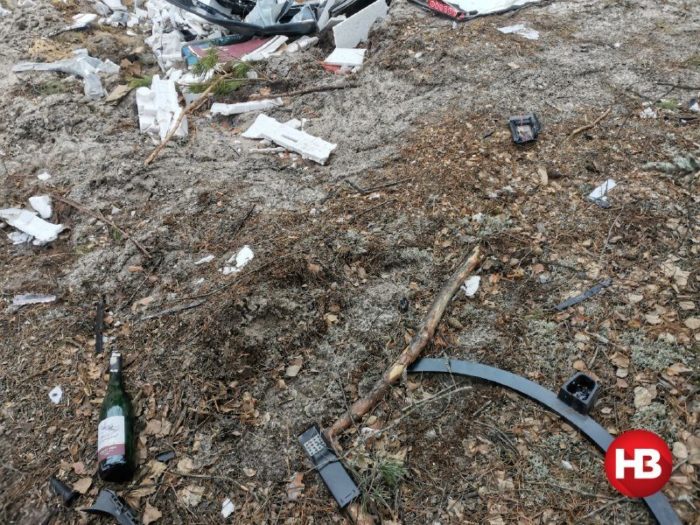
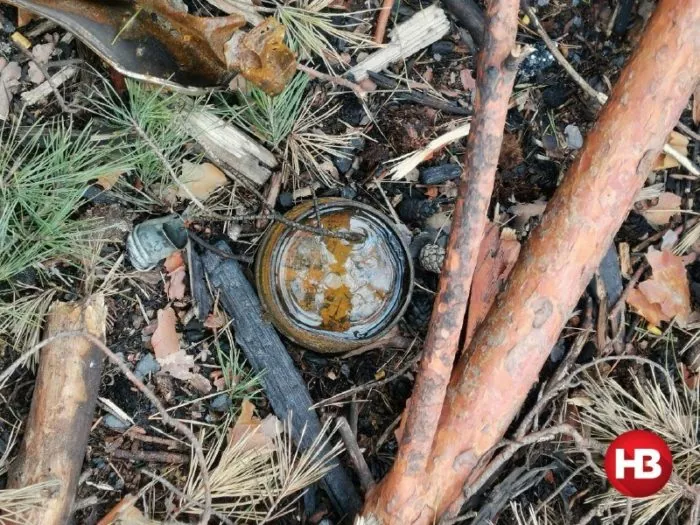
Reviving village life
Today, a humanitarian center has opened its doors in the center of Mykulychi. The locals redistribute aid arriving from other cities. Svitlana is in charge of the accounts. She explains that the staff is now distributing crucial aid and recording how many villagers are left and where they are located.“We pack everything on the bus, go through the village and distribute what we have and what is needed,” she says.Svitlana says that there are now 1,482 people in the village as opposed to more than 2,500 before the war. Svitlana is a teacher, but the Russians looted and vandalized the school where she worked before the war.


“Every day the number of villagers is growing because people are returning home. They come to see me. They offer their help… and we do what we can” she says, smiling with tears in her eyes.[embedyt] https://www.youtube.com/watch?v=Qy79TTydLGI[/embedyt] Read more:
- Like Napoleon’s 1812: why Russian troops retreated from northern Ukraine
- Bucha massacre. Ukraine urges ICC to gather evidence of Russian war crimes
- “The Russian military rape women, the dead are just being dumped,” evacuee from Russian-occupied city says
- “They killed my family in cold blood!” Russian military targets civilians fleeing bombardments
- “Mariupol people melt snow, drink water from heating mains”: besieged city faces total destruction
- Eyewitness account of execution in Bucha
- Russian military targets civilians fleeing bombardments
- As Russia continues bombing civilian structures Kyiv residents take shelter in city’s vast metro network
- Every day of delay costs enormous amount of lives, says Ukrainian official
- Russian soldiers admit heavy losses, looting, shelling civilians in phone calls to wives and mothers
- Horror and terror in Mariupol eyewitness testimony of the bombing of Mariupol drama theater

